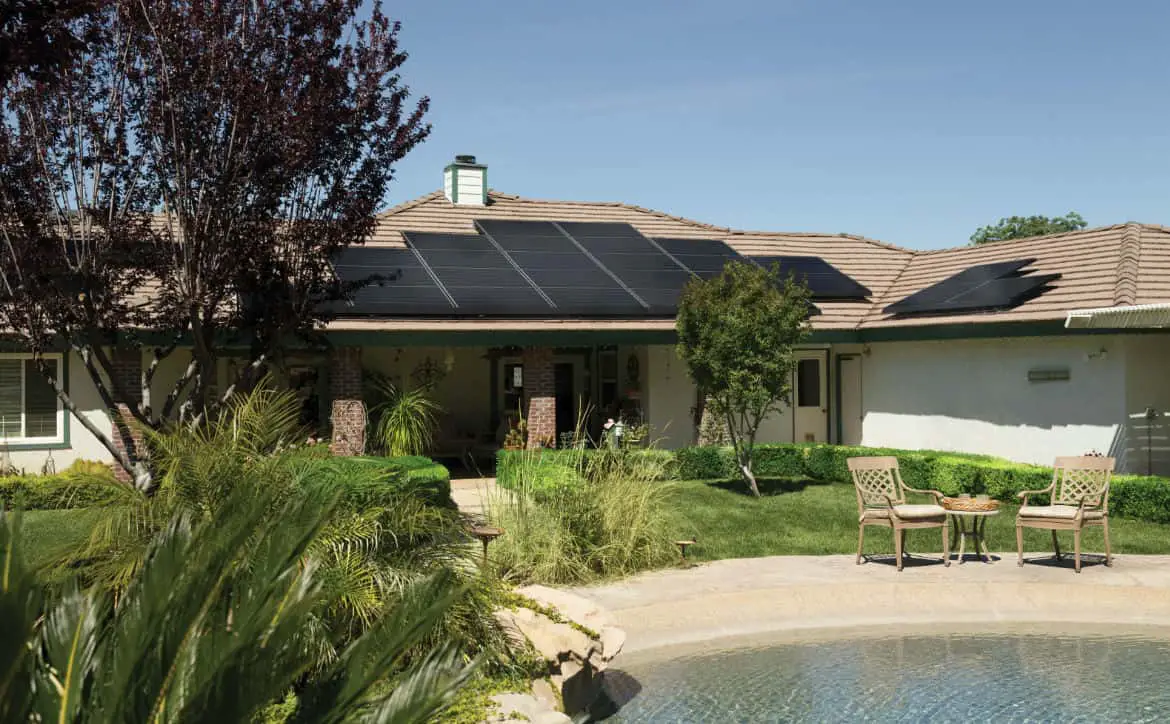Home technology gets better every year, for people and the environment. Over the past several years, smart home tech has steadily gained popularity. These devices make everyday life easier and help homeowners save money.
Estimated reading time: 6 minutes
An important additional benefit of smart home tech is its positive impact on the environment. By helping homeowners use resources more efficiently and reduce their carbon footprint, these pieces of home tech are helping the planet every day.
1. Solar Panels
Not too long ago, solar panels were a niche technology only found on a few homes here and there. Today, however, there have been over 2 million solar panel installations in the U.S. with adoption projected to continue growing through 2030. The price of solar panels has dropped over the years and new technologies, like Tesla’s innovative solar roof, are increasing mainstream interest in home solar.
This piece of home tech may be a larger investment than some others on this list, but it can pay off in the long run, especially given rising energy costs. Even if your home doesn’t get enough sun to be powered 100% by solar panels, they can help reduce both your electricity bill and your carbon footprint.
2. Composters
Composting has been around for a very long time, but technology is making it even more effective for homeowners. Electric kitchen composters can turn food scraps into green, recycled soil in a matter of hours. In comparison, traditional composting can take weeks. While both are helpful for the environment, electric composters make it easier for homeowners to get the most out of their compost heap and food scraps.
By investing in an electric composter, homeowners can reduce the amount of waste they send to landfills. This is especially important with the organic waste that composters break down since organic waste creates methane in landfills. Methane is a particularly potent greenhouse gas that is 25 times more effective at trapping heat than CO2.
3. Smart Thermostats
Smart thermostats help homeowners use energy more efficiently, lowering their overall energy bills and optimizing their heating and cooling for sustainability. An estimated 48% of homeowners’ energy consumption is due to heating and cooling, so reducing energy use in this category can have a big impact. The best way to accomplish that is with a smart or programmable thermostat.
These pieces of smart home tech are packed with features that maximize heating and cooling optimization. For example, you could program your thermostat to adjust your home’s temperature based on a daily schedule, reducing power consumption during the day when everyone is at work or school. Most smart thermostats can also track power consumption so you can get insights about where you might be able to cut back even more without compromising comfort.
4. LED Smart Lightbulbs
Lightbulbs might not seem like advanced home tech, but they can make a big difference if you want to use your home tech to help the environment. Switching to LED lightbulbs, including smart lightbulbs, will save you money as well. The U.S. Department of Energy estimates that LED lightbulbs use at least 75% less power than conventional incandescent bulbs. Plus, they last 25 times longer!
So, by swapping out old bulbs for LED ones, you’ll be reducing waste and energy consumption at the same time while saving potentially hundreds of dollars a year. LED lightbulbs are easy to find in most department stores today.
You can also try smart lightbulbs to get some extra features like different light colors, brightness levels, and hues, as well as streamlined scheduled lighting options. Depending on the type of smart lightbulbs you go with, you may need a smart home hub device to control everything.

5. Smart Sprinklers
The U.S. Environmental Protection Agency estimates that up to 50% of outdoor water usage in the U.S. is wasted on inefficient watering methods. This wastes valuable clean water as well as energy. By using a smart sprinkler or smart irrigation system, homeowners can reduce their water waste and lower their water bills. In fact, the EPA even offers a utility bill rebate for using a Watersense-certified smart sprinkler system.
While smart sprinklers can cost $100 or more, they will pay off over time, like many smart home devices. These pieces of smart home tech come with many convenient features, like the ability to schedule watering times, automated weather-based adjustments, and efficient water usage. Smart sprinklers are designed to optimize watering highly precisely, as well, meaning they will probably give your lawn and garden a better watering experience.
6. EV Charging Stations
For homeowners with the financial means to do so, investing in an electric vehicle and home EV charging station is a big step toward helping the environment. By switching to an EV, you’ll reduce your carbon footprint enormously. A home charging station is a key addition to your home if you’re going to swap out your gas-powered car for a clean electric one. More charging stations are cropping up around the U.S., but having one at home will be the most convenient.
EV manufacturers will have home charging stations available specifically designed for your EV model. For those who are new to the EV world, there are a few top models that offer a great place to start your search for a green vehicle, including the Tesla Model 3.
7. Smart Appliances
No smart home is complete today without energy-efficient smart appliances. There are countless varieties and models available to choose from today, so it’s easy for homeowners to find appliances that match the specific features they’re looking for. You can also invest in newer, greener appliances gradually, by buying one new appliance at a time to add to your home.
Smart appliances will contribute to reducing your overall energy consumption and some have additional sustainability features. For example, smart washing machines use water more efficiently, reducing your water waste. A smart fridge could also help you waste less food by giving you alerts when the food inside is nearing its expiration date. Features like these help you save money and help the environment on a daily basis.
Sustainable Living With Green Home Tech
Smart and green home technology can make daily life easier and help homeowners save money on utility bills while reducing their negative impact on the environment. Home tech harnesses the power of adding up little positive habits and adjustments to make a big change. Investing in these devices will be well worth it for any homeowner.
What do you think of smart home tech and home tech in general? Please share your thoughts on any of the social media pages listed below. You can also comment on our MeWe page by joining the MeWe social network.










